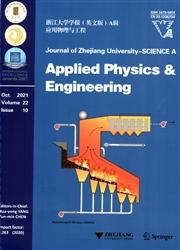低温对高速列车气动特性的影响
IF 3.9
3区 工程技术
Q1 ENGINEERING, MULTIDISCIPLINARY
引用次数: 0
摘要
本文采用基于剪切应力输运(SST) k-ω湍流模型的改进延迟分离涡模拟(IDDES)方法,研究了雷诺数Re =1.85×10^6的低温高速列车车体下流动特性。通过风洞试验验证了数值方法的准确性。在+15°C、0°C、- 15°C和- 30°C四个温度值下,比较了列车的气动阻力、列车表面的压力分布、车辆周围的流动和尾流。研究发现,较低的运行温度显著增加了列车的气动阻力。与+15−C时相比,低温时的整体阻力分别增加了5.3%(0°C)、11.0%(- 15°C)和17.4%(- 30°C)。此外,低温增强了车身周围和表面的正负压,提高了易受冲击流动和流速快速变化影响的区域的峰值正负压值。车体周围列车诱导风范围明显减小,涡度分布区域向后移动,转向架空腔内气流速度明显增大。同时,温度使尾流中的速度显著降低。可以看出,温度降低会严重干扰列车的正常运行,同时增加气动阻力和能量消耗,并且对车体周围的气流特性有明显的干扰。目的 受空气物理参数变化影响,低温下列车周围的流场特性与常温时存在差异。本文旨在对高速列车在低运行温度下的空气动力学性能及流场特性变化研究予以补充,探究低温对列车周围流场、列车风及列车尾流等方面的影响,以提高高速列车的抗高寒性能。 创新点 1. 将气体参数设置为低温环境,探究列车相比常温下的气动性能及周围流场的变化。2. 对比不同低温环境,探究不同程度低温对列车气动特性的影响。 方法 1. 通过基于SST k -ω湍流模型的idd数值计算方法对高速列车在雷诺数约为1.85×106的条件下低温运行的流动特性进行仿真。2。依托后处理软件对不同温度下列车气动阻力、表面压力分布、车身周围流动及尾流等进行分析。3. 将结果进行比对,得出不同程度低温对列车气动特性的影响。 结论 1. 低温显著增加列车气动阻力;相比常温环境,0°C,−15°C及∑30°C时的气动阻力分别增加了5.3%,11.0%和17.4%。2。低温会增强车体周围的正负压力场,进而提高冲击流及流速快速变化区域的正负压力峰值。3. 低温时,列车风的作用范围缩小,涡量分布区域后移,而转向架舱内的气流流速增加。4. 低温时,列车的尾流速度降低。本文章由计算机程序翻译,如有差异,请以英文原文为准。
Effect of low operating temperature on the aerodynamic characteristics of a high-speed train
In this study, an improved delayed detached eddy simulation (IDDES) method based on the shear-stress transport (SST) k-ω turbulence model has been used to investigate the underbody flow characteristics of a high-speed train operating at lower temperatures with Reynolds number Re =1.85×10^6. The accuracy of the numerical method has been validated by wind tunnel tests. The aerodynamic drag of the train, pressure distribution on the surface of the train, the flow around the vehicle, and the wake flow are compared for four temperature values: +15 °C, 0 °C, −15 °C, and −30 °C. It was found that lower operating temperatures significantly increased the aerodynamic drag force of the train. The drag overall at low temperatures increased by 5.3% (0 °C), 11.0% (−15 °C), and 17.4% (−30 °C), respectively, relative to the drag at +15 −C. In addition, the low temperature enhances the positive and negative pressures around and on the surface of the car body, raising the peak positive and negative pressure values in areas susceptible to impingement flow and to rapid changes in flow velocity. The range of train-induced winds around the car body is significantly reduced, the distribution area of vorticity moves backwards, and the airflow velocity in the bogie cavity is significantly increased. At the same time, the temperature causes a significant velocity reduction in the wake flow. It can be seen that the temperature reduction can seriously disturb the normal operation of the train while increasing the aerodynamic drag and energy consumption, and significantly interfering with the airflow characteristics around the car body. 目的 受空气物理参数变化影响,低温下列车周围的流场特性与常温时存在差异。本文旨在对高速列车在低运行温度下的空气动力学性能及流场特性变化研究予以补充,探究低温对列车周围流场、列车风及列车尾流等方面的影响,以提高高速列车的抗高寒性能。 创新点 1. 将气体参数设置为低温环境,探究列车相比常温下的气动性能及周围流场的变化。2. 对比不同低温环境,探究不同程度低温对列车气动特性的影响。 方法 1. 通过基于SST k-ω湍流模型的IDDES数值计算方法对高速列车在雷诺数约为1.85×106的条件下低温运行的流动特性进行仿真。2. 依托后处理软件对不同温度下列车气动阻力、表面压力分布、车身周围流动及尾流等进行分析。3. 将结果进行比对,得出不同程度低温对列车气动特性的影响。 结论 1. 低温显著增加列车气动阻力;相比常温环境,0 °C、−15 °C及∑30 °C时的气动阻力分别增加了5.3%、11.0%和17.4%。2. 低温会增强车体周围的正负压力场,进而提高冲击流及流速快速变化区域的正负压力峰值。3. 低温时,列车风的作用范围缩小,涡量分布区域后移,而转向架舱内的气流流速增加。4. 低温时,列车的尾流速度降低。
求助全文
通过发布文献求助,成功后即可免费获取论文全文。
去求助
来源期刊

Journal of Zhejiang University-SCIENCE A
工程技术-工程:综合
CiteScore
5.60
自引率
12.50%
发文量
2964
审稿时长
2.9 months
期刊介绍:
Journal of Zhejiang University SCIENCE A covers research in Applied Physics, Mechanical and Civil Engineering, Environmental Science and Energy, Materials Science and Chemical Engineering, etc.
 求助内容:
求助内容: 应助结果提醒方式:
应助结果提醒方式:


